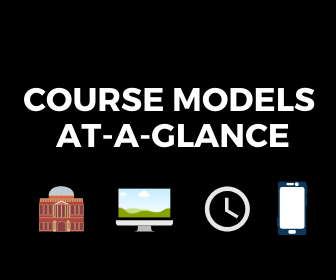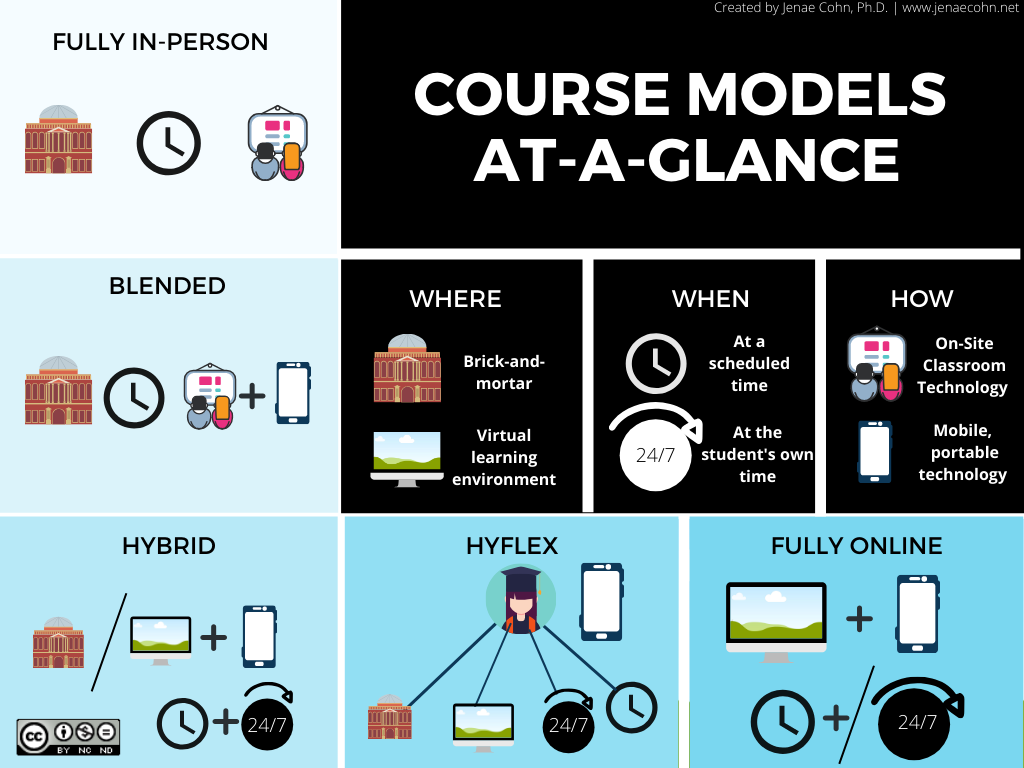As higher education’s instructors and administrators plan for fall 2020, there has been a lot of discussion about what different course models might look like given the interactions that might span places, spaces, and time zones. Joshua Kim and Edward Maloney published a fantastic series on 15 possible scenarios for fall, while universities across the U.S. have been gradually rolling out announcements about whether or how they will bring undergraduate students back to in-person instruction in the fall. Where I currently work, at Stanford University, we recently learned that undergraduate students will be brought back to stay in residence halls in class-based cohorts. For example, first-year students and third-year students might stay in the dorms in the fall while second-year and fourth-year students might stay in the dorms in the winter.
The decisions about which cohorts will return when remains unclear, but what is clear is that even when small groups of students are back, classrooms that cannot allow for adequate social distancing during the ongoing pandemic will not be used. That means our institution will be relying heavily on remote instruction, both to accommodate larger classes, but also to support smaller classes that would normally meet in shoebox-sized seminar rooms where adequate social distancing would not be possible.
I’ve been in a lot (a lot) of meetings about which kinds of instructional models might be best for fall. To make some of these conversations easier, I decided to draft up an infographic that offers a thumbnail sketch of the spectrum of course models that have been used in the past. I drew upon a number of sources (and my own experience as a designer of hybrid and fully online courses to make this quick graphic), and my goal here was concision and quick comprehension rather than in-depth discussion or conversation.
Specifically, I wanted to help educators and administrators quickly understand that hybrid course models and HyFlex course models in particular are not interchangeable. A HyFlex model (as I learned from the fantastic open source book by Brian Beatty, the creator of the HyFlex model) really hinges, for example, on students having a choice about whether they attend class in-person or online. That is, HyFlex instructors need to have open expectations about which students will be in which spaces when. A hybrid model, on the other hand, assumes that all students will do the same work (i.e. asynchronous work) in a remote environment and that all students will then be able to subsequently meet synchronously and in-person.
Note that this is not really meant to show different online course design models. Another infographic on another day (spoiler alert!) will cover some of the differences between a Community of Inquiry (COI) framework, a backwards design framework, etc (with a culturally-responsive framework as critical to any of these designs). So, think of this resource as quickly breaking down where, when, and how class sessions in higher education might happen.
Feel free to download and share the following infographic, created with a CC BY-NC-ND license. I would highly recommend looking at the Text-Only Course Models At-a-Glance document too, to read some text alongside the graphic.
Looking for More? Check Out these Resources about Different Course Models:
- Remote Teaching vs. Online Learning: SUNY Online Teaching (2020)
- The Difference Between Emergency Remote Teaching and Online Learning: Charles Hodges, Stephanie Moore, Barb Lockee, Torrey Trust, and Aaron Bond (2020)
- Hybrid-Flexible Course Design: Brian J. Beatty (2019)
- Online Educational Delivery Models: A Descriptive Approach: Phil Hill (2012)



Very helpful Jenae. I find this type of visualization very useful in conversations with those who do not have a lot of experience considering a range of design options. Thanks.
Thanks for this comment, Reid! I definitely see this as a conversational *starting point,* which can then scaffold into more complex conversations about course design.
Is there a name for a model that is like Hyflex but without the asynchronous option? So basically students choose between in-person synchronous or remote synchronous.
Hey, Carl! Thanks for this question. I think what you’re describing would probably be most closely described as a variation on a hybrid model, where you’re really trying to distinctly determine where and how students will engage with each other (in this case, you want to determine how the bulk of the interactions will occur in synchronous or real time).
I would bear in mind that most courses, even fully face-to-face ones, have “homework” of some kind, which is an inherently asynchronous component. So thinking of your course design from the perspective of, “What kinds of interactions must happen in real time?” (regardless of whether students are there in-person or remote) and “What kinds of interactions or activities do not need to happen in real time?” may be a helpful frame on this too.
I’m glad you mention this, as synchronous remote, with students assigned a limited attendance option, is likely to be the dominant mode of instruction this fall, and this is neither a hybrid nor a hyflex course (see Jenae’s point on learner choice). University of Central Florida is calling this “blendflex”: https://digitallearning.ucf.edu/newsroom/keeplearning/blendflex-model/
Thanks for sharing this resource, Jared! That’s really helpful to get at that more nuanced definition.
Hi Jenae, very helpful. Can I translate this infographic to Spanish? I want to distribute it on my weekly newsletter.Greetings from Chile.
Hi Patricio! Absolutely, I’m thrilled that you’re interested in translating this!